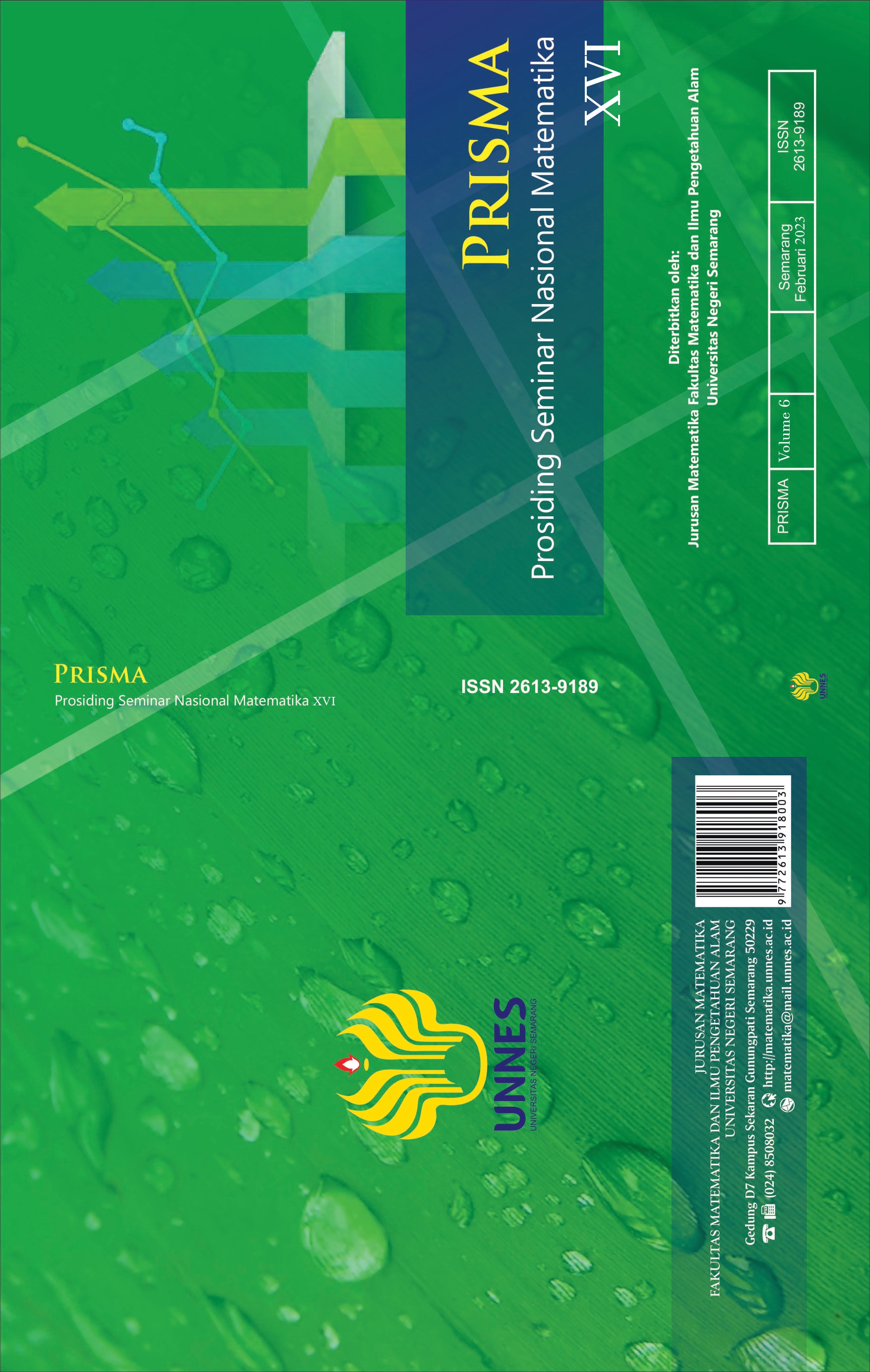Kajian Fungsi Pengawasan Lyapunov Dirancang Oleh Pembatasan Input Singularitas Memerlukan Syarat Angka Reproduksi untuk Model Epidemik
Main Article Content
Abstract
Control Lyapunov Function (CLF) adalah sebuah sistem tak linier, mengawasi stabilitas ke sistem untuk mendapakan CLF, turunan waktu dari sebuah fungsional seharusnya didefinisikan negatif. Frekuensi prosedur memperbaiki sebuah input pengawasan dimana fungsi rasional atau fungsi invers. Input Pengawasan tidak didefinisikan pada ruang spesifik di mana fungsi rasional sama dengan nol atau fungsi invers tak ada. Dengan singularitas, trayektori sistem pengawasan tidak dapat dibangun, dimana salah satu dari alasan penting untuk membuat sistem tak linier menjadi stabil asymptotik global, angka reproduksi RO ≤ 1. Jika RO > 1 keseimbangan endenik, stabil asymptotik positif. Hukum pengawasan halus ke stabilitas asymptotik global dengan arti membatalkan singularitas pada input pengawasan.
Article Details
References
D. Colon and F. M. Pait, “Geometry of Adaptive Control : Optimization and Geodesics,” Int. J. Adapt. Control, Signal Process, vol. 18, no. 4, pp. 381-392, Apr. 2004.
R. M. Hirschorn, “Output Trackingthrough Singularities,” Proc. 41st IEEE EDE,pp. 3843-3848, Des. 2002.
Khalil, Nonlinear Systems, 3rd Ed., Prentice Hall, New Jersey, 2002.
X. Y. Lai, S. X. Yang, J. H. She and M. Wu, “Singularity Avoidance for AcrobotsBased on Fuzz-control Strategy,” Robot., Autunom. Syst., vol. 57, no. 2, pp. 202-211, Feb. 2009.
Z. H. Li and M. Krstic,” Maximizing Regions of Attraction via Backstepping and CLFs with Singularities,” Syst., Control Lett, voll. 30, no. 4, pp. 195-207, May 1997.
D.E.Sontang,“A Universal Construction of Artstein Theorem on Nonlinear Stabilization,” Syst., Control Lett., vol. 13, no. 2, pp. 117-123, Aug. 1989.
C. J. Tomlin and S. S. Sastry, “Switching through Singularities,” Syst., Control Lett., vol. 35, no. 3, pp. 145-154, Oct. 1998.
H. Wei and S. I. Amari, “Dynamics of Learning Near Singularities in Radial Basis Function Networks,” Neur. Net., vol. 21, no. 7, pp. 989-1005, Sep. 2008
L. Xiaoping and S. Celikovsky, “Feedback Control, vol. 68, no. 4, pp. 753-774, 1997
J. X. Xu, T. H. Lee, and M. Wang, “Self-Tuning Type Variable Structure Control Method for a Class of Nonlinear Systems,” Int. J. Robust, Nonlinear Control, vol. 8, no. 13, pp. 1133-1153, Dec. 1998.
J. X. Xu. and R. Yan, “Fixed Poin Theorem-Based Iterative Learning Control for LTV Systems with Input Singularity,” IEEE Trans. Autom, Control, vol. 48, no. 3, pp. 487-492, Mar. 2003.
G. B. Koo, J. B. Park, and Y. H. Joo, “Observer-based Sampled-data controller of linear system for the wave energy converter,” Int. Journal of Fuzzy Logic and Intelligent Systems, vol. 11, no. 4, pp. 275-279, Des. 2011.
Dag Heal Yoarm, Youg Hoon Joo, “Control lyapnov Enction Design by Cancelling Input Singularity”, International Jounal of Fuzzy Logic and Intelligent System, vol. 12, no. 2, June 2022, pp. 131-136.
A Fall, A. Iggidr, G. Sallet and J. J. Tenr, “Epidemiological Models and Lyapurov Function”, Math. Mode. Nat. Phenom. vol. 2, no. 1, 2007, pp. 62-83
